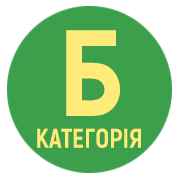SURGICAL COMPLICATIONS WHEN USING DIFFERENT TYPES OF SUTURE MATERIAL IN AESTHETIC MAMMOPLASTICS
DOI:
https://doi.org/10.32782/2786-9067-2024-28-11Keywords:
surgical suture material, monocryl, vicryl, mammoplastyAbstract
Surgical complications increase with the increase in the number of operations on the mammary gland, and the connection of tissues is one of the most difficult stages of surgical intervention, the outcome of the operation largely depends on the quality of its performance. One of the factors that lead to inflammation can be the suture material used for the connection, which can then remain in the human body for a long time. The reaction of tissues to the results of the operation depends on the quality, chemical composition and structure of the suture material. The purpose of the work is to study surgical complications when using different types of suture material in aesthetic mammoplasty. Materials and methods. Review and generalization of data from the literature, modern scientific and experimental research related to the study of this issue. Results and discussion. The results of the study prove that suture material is used for applying surgical sutures and ligation of individual anatomical structures (vessels, skin, muscles, bones), as well as for stopping bleeding. This material must have strength, a smooth surface, withstand sterilization, and tie into strong knots. Surgical suture materials are a foreign object for the body, which remains in the tissues and can affect the course of the inflammatory process in different ways. In the surgical practice of aesthetic mammoplasty, depending on the area of application of sutures, the suture material can remain in the deep layers of soft tissues, or be removed after two weeks in the conditions of initial healing of the postoperative wound. Conclusions. The use of modern and safe suture materials with characteristics of strength and hypoallergenicity is no less important in surgery and correction of the mammary gland than the use of generally recognized and long-lasting surgical techniques. Therefore, the specifics of use and the quality of surgical suture material greatly influence the positive outcome of aesthetic mammoplasty surgery.
References
Вільцанюк О. А. Цебренко М. В., Резанова Н. М. та ін. Нанокомпозитні хірургічні шовні матеріали та алотрансплантанти для з’єднання та алопластики тканин. Клінічна хірургія. 2015. № 11.2 (880). С. 126.
Вільцанюк О. А., Цебренко М. В., Скорук Р. В., Хуторянський М. О. Обґрунтування використання нових видів шовного матеріалу для з’єднання тканин. Клінічна хірургія. 2012. № 11 (837). С. 7.
Годлевський А. І., Шапринський В. О. Післяопераційний перитоніт : монографія. Вінниця : Нова книга, 2001. 240 с.
Гончар С. В. Новий біологічний шовний матеріал, що розсмоктується, в урологічній практиці. Світ медицини та біології. 2012. № 3. С. 53–55.
Гумінський Ю. Й., Скорук Р. В. Морфологічна та морфометрична реакція тканин печінки та скелетних м’язів на імплантацію шовного матеріалу з поліпропілену модифікованого нанокомпозитом срібла. Вісник морфології. 2016. Т. 22, № 2. С. 243‒247.
Костенко В. А., Скрипников Н. С., Лишненко A. B. [и др.]. Хирургический шовный материал будущего: конструктивные взаимоотношения нити и паравульнарных тканей. Актуальні проблеми сучасної медицини. Вісник Української медичної стоматологічної академії. 2006. Т. 6, № 1–2. С. 259–261.
Проніна О. М., Білаш С. М., Кобеняк М. М. Сучасний шовний матеріал при хірургічних операціях на органах сечовидільної системи. Вісник проблем біології і медицини. 2016. Вип. 2, т. 3 (130). С. 57–62.
Фомін П. Д., Жученко О. П., Желіба М. Д. Профілактика та лікування гнійно-запальних ускладнень післяопераційних лапаротомних ран в ургентній хірургії : монографія. Житомир : ЖДМУ ім. Франка, 2009. 196 с.
Шефтель В. О., Дышиневич Н. Е., Сова Р. Е. Токсикология полимерных материалов. Київ : Здоровья, 1988. 216 с.
Abboud N., El Hajj H., Abboud S., Dibo S., Abboud M.H. A new suturing method for optimal wound healing: technique and experience. Aesthetic Surgery Journal Open Forum. 2020.
Ascherman I.A. Refractory eczematous dermatitis associateds with retained suture material / I.A. Ascherman, C.I. Henter, D.K. Bickers. Annalsofplasticsurgery. 2006. Vol. 56, № 2. P. 205–207.
Byrne M., Aly A. The surgical suture. Aesthetic Surgery Journal. 2019. № 39. S67–S72.
Malyuga V.G. Comparative study of suture materials: mylar, catgut, chrome catgut and okcelon in surgery of the gastrointestinal tract: autoref. thesis candidate of medicine Sciences: 14.00.27. Kyiv, 1983. 14 p.
Obermeier A., SchneiderJ, Föhr P. [et al.] In vitro evaluation of novel antimicrobial coatings for surgical sutures using octenidine. BMC Microbiol. 2015. Vol. 15. 186 p. DOI: 10.1186 /s12866-015-0523-4.
Skoruk R.V. Morphological and morphometric analysis of the response of liver tissues and skeletal muscles to the implantation of polyfilament surgical suture material made of silk. Tavri medical and biological bulletin. 2013. Vol. 16, No. 1, pt. 2. P. 178‒182.
Thiede A. BiologischeWertigkeit der Nahtmaterialien. In: Thiede A., Hamelmann H., editors. Moderne Nahtmaterialien und Nahttechniken in der Chirurgie. Springer, 1982. P. 246–260.





